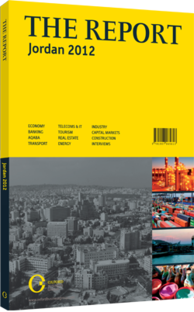OBG talks to Raed Shadfan, CEO, Atlas Medical

Interview: Raed Shadfan
Due to the small size of the kingdom’s economy, local firms in this industry are export-oriented. Over the last decade, the majority of medical devices from Jordan were delivered to countries in the MENA region, but this export profile is changing for several reasons. First, recent turmoil has reduced demand in key markets like Egypt, Syria, Yemen and Libya. Moreover, in the GCC nations, where demand for medical devices is quite high, sector regulations are currently difficult to understand or predict. Companies have therefore begun targeting opportunities in North America and the eurozone, where the rules are clearer to understand and the potential profits immense.
Second, the industry’s export profile is changing because our accreditation standards are improving. Over the past few years, more and more companies have acquired sector-related ISO and CE certification, and in 2011 the Jordan Food and Drug Administration (JFDA) passed the country’s first law to regulate the medical device industry. This landmark legislation, formulated in close cooperation with the private sector and harmonised with FDA policy in the US, will allow industry players in Jordan to penetrate advanced markets worldwide, driving growth. This is the lesson that one can take from the kingdom’s pharmaceuticals sector, which now generates over $1bn in revenue for the country each year precisely because a comprehensive regulatory framework has been put in place.
What further steps should businesses and policymakers take to promote growth in the industry?
SHADFAN: Medical device manufacturers in Jordan need to identify their strengths and weaknesses. They should focus on developing high-margin customisable devices, rather than items for mass production. Though the quality of human resources in the kingdom is fairly high, we cannot compete in mass production with countries like China, India and Malaysia, which have highly complex systems for rolling out devices in large quantities.
Second, if firms plan to enter the high-margin market, they need to become more innovative, and more focused on research and development. Manufacturers in Jordan have not succeeded in creating new devices so far, instead they mainly use or imitate existing products, making only slight alterations to product presentation for certain overseas markets. One reason why we have failed in this area is that device manufacturers and university research centres are disconnected. I think this reflects a lack of trust, as the two parties are reluctant to enter into potential profit-sharing agreements. In addition, our university system does not have the financial capacity to carry out extensive, commercialisation-focused research.
Funding is also an issue for Jordan’s device manufacturers, most of which are small and medium-sized enterprises (SMEs). Although accreditation standards are improving, it remains costly to acquire international certification. Exporting products to distant markets is also a cost-intensive process, so policymakers should increase the number of funding schemes and provide more support for SMEs that need help completing international grant applications.
Lastly, Jordan is one of the world’s most popular health tourism destinations, and has an excellent reputation for quality and affordable care. Companies in the sector need to leverage this reputation aggressively in their marketing and promotional campaigns.
How much could the medical device industry realistically contribute to the national economy?
SHADFAN: If the sector achieves its development objectives, it could make a major contribution in terms of export revenues and long-term employment opportunities for science and engineering graduates. How successful we become may hinge on innovation, or our ability to create one or two headline devices that attract the attention of global investors and importers.
You have reached the limit of premium articles you can view for free.
Choose from the options below to purchase print or digital editions of our Reports. You can also purchase a website subscription giving you unlimited access to all of our Reports online for 12 months.
If you have already purchased this Report or have a website subscription, please login to continue.

